QuestionQUESTION: I purchased a Russian Tortoise from Pet smart last Sunday and 2 days later it still has not touched it's food. I am housing it indoor in a 3ft 4 by 3ft 4 wood box I built. It has play sand and peat moss as a substrate I bought at Home depot, Zoomed power sun for lighting, reptile log, humidity is at 30 and basking spot is at 90, the cool side at 75. also have a water dish it has yet to go into or drink because the water is clean. As far as food I always put out new greens the last 3 days which consists of green leaf, kale, Swiss chard and spring mix. I know they say to give it 3-4 days for the tortoise to adjust but still getting worried it won't eat or drink. It is very active trying to get out of the enclosure. Any suggestions on what is going on with my Russian would be appreciated.Thanks
ANSWER: Hi Manuel,
It's not unusual for new tortoises to take as long as two weeks to start eating, but there's some things to check to make sure you have him set up in optimum conditions.
The enclosure size is a bit small, but fine for wintertime if you can build a secure outdoor pen for spring, summer, and fall. They thrive in outdoor conditions, and you can plant the pen so he can graze naturally. The Powersun bulb is great for heat and UVB. When you say "peat moss," do you mean actual peat moss, or coconut coir (comes in a brick that expands when you soak it). Regular peat moss doesn't make a very good substrate because it doesn't tend to absorb water very well and is very dusty when dry. The coir is better, or plain top soil. It's also important to keep it slightly damp at all times to help prevent dehydration.
Your temperatures sound right, but where are you measuring them? Basking temperature should be measured on the substrate directly under the basking light. If your thermometer is on the side of the enclosure and measuring air temperature, the basking temp will be much too hot. Again, humidity should be measured at the substrate level, although to be honest I don't bother with measuring humidity--not that it's not important, but having a damp(ish) substrate is really what's important. If you do measure, the humidity level should be more like 60-70%. While Russian tortoises naturally live in an arid habitat, they spend most of their time in burrows where the humidity is much higher. In captivity, because they don't have the opportunity to burrow indoors and basking lamps are very drying, we need to compensate by boosting the moisture in the enclosure.
Diet sounds pretty good, but ditch the chard. It's too high in oxylates. You can feed turnip and mustard greens, kale, romaine and other lettuces (not too much, and no iceberg lettuce), collards, spring mix, dandelions, chicory, nasturtiums, etc. There's a complete food list at www.russiantortoise.org.
You didn't say whether you've been soaking him, but in all likelihood he's at least somewhat dehydrated, so I would give him a 15 minute soak in lukewarm water daily for the next three days or so, then about three times a week thereafter. Dehydration is a very common problem with tortoises kept indoors, and they don't always drink.
Finally, if Petsmart told you he's captive-bred and young, it's not true. They seem to tell everyone ther Russians are CB and six to 12 months old, but juvenile Russian tortoises that age are very small (maybe 2.5" and 50-100g). Their tortoises are really all wild-caught adults. So yours is at least five years old, and more likely 10 or more. Newly imported tortoises often have parasites, so you may need to take yours to the vet, but at this point make any necessary corrections to the habitat first, give him a few more days to settle in (and soakings), and let's see how it goes. Post back with any questions, and let me know how he's doing in a couple of days.
---------- FOLLOW-UP ----------
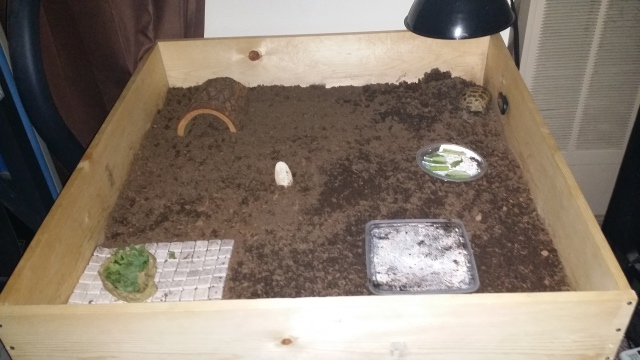 Enclosure
Enclosure
QUESTION: Thank you Jeannie for getting back to me so quick and I will make some adjustments you recommended. As soon as spring comes around or even before I will have a outdoor enclosure for my tortoise. The peat moss I purchased was from home depot and it was the Premier sphagnum peat moss. Still haven't decided to go with coir or top soil. Is garden soil the same as top soil? Since I have the enclosure indoor I would like to see what has less of an odor. As far as the temperature goes I will move the thermometer to get a correct reading and adjust if needed. I soaked him today for 15 min and will do that the next 2 days. Hopefully he comes around these next couple of days and starts eating and drinking. I will keep you posted on how he is doing. I also posted a pic of his enclosure in case you have any suggestions on something need to add. Once again I cannot thank you enough for taking the time to help out a new Russian tortoise owner that only wants the best for his pet.
AnswerThanks for the picture. I can see where your thermometer is, and if it's registering 90 degrees on the side, the actual basking temperature may be several degrees higher. So definitely check that. If you can, it's better if the basking area is more towards the center. I use the ZooMed lamp stands, because they have an extendable arm so you can adjust where the basking area is.
Garden soil is top soil; just make sure it doesn't have additives in it. It can be hard to find plain soil, which is why I just use the coir. The coir is pretty odorless, or at least it doesn't smell bad.
Let me know if adjusting the lamp helps. If you want, when you reply set it to *private* and I'll give you my email so you can contact me directly. I think AllExperts only allows three replies per question.
And you're very welcome. It's always a pleasure to hear from someone who wants to do the right thing for his tortoise!


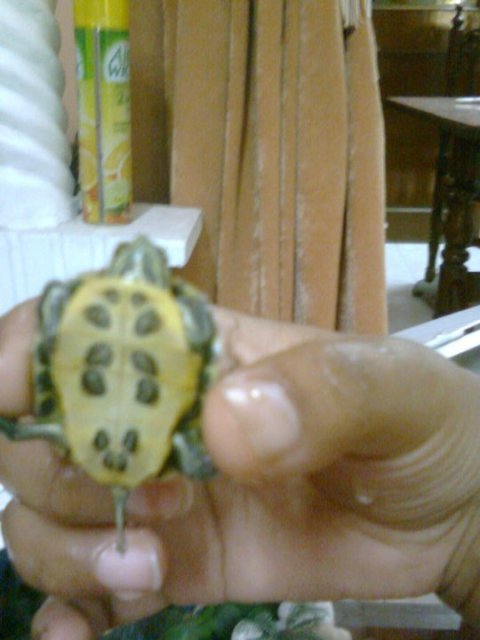 turles pregnancy...
Question
gangster
i have bought a red eared slider turt
turles pregnancy...
Question
gangster
i have bought a red eared slider turt
 flakey substance on turtles neck and legs
Question
Red ear slider
red ear slider about 9 mos. 20
flakey substance on turtles neck and legs
Question
Red ear slider
red ear slider about 9 mos. 20
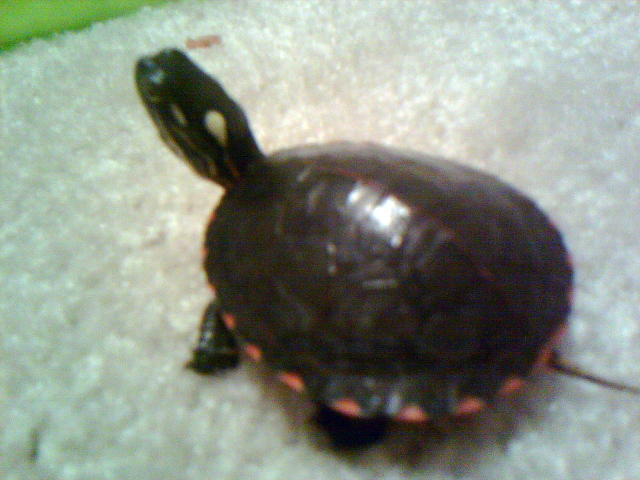 Could my turtle have an eye infection?
QuestionQUESTION: Me and my friend found this little tu
Could my turtle have an eye infection?
QuestionQUESTION: Me and my friend found this little tu
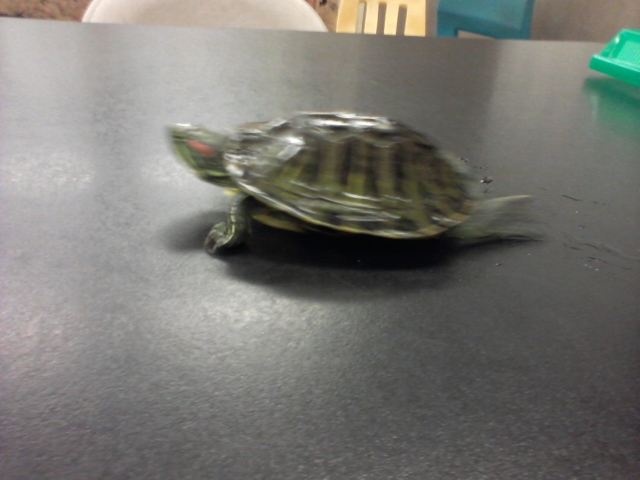 HELP! PLEASE!
QuestionTurtle
QUESTION: I Understand Youre Not
HELP! PLEASE!
QuestionTurtle
QUESTION: I Understand Youre Not
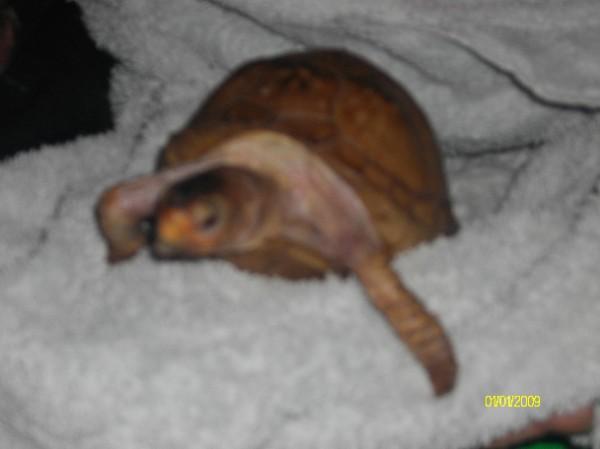 what kind of turtle/tortoise do i have?
Question
my turtle
i have no idea what kind of turtle/t
what kind of turtle/tortoise do i have?
Question
my turtle
i have no idea what kind of turtle/t